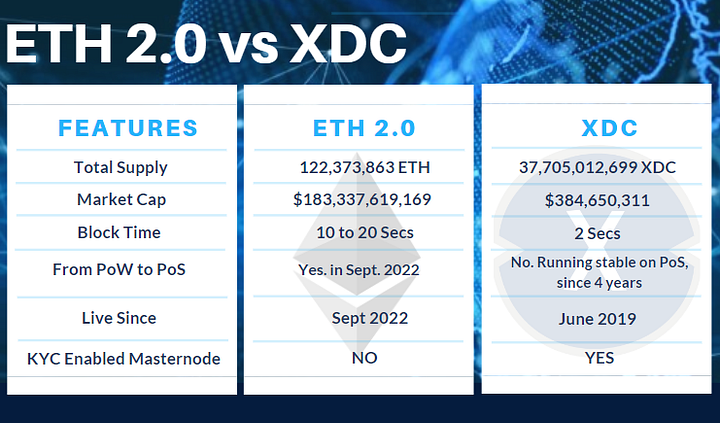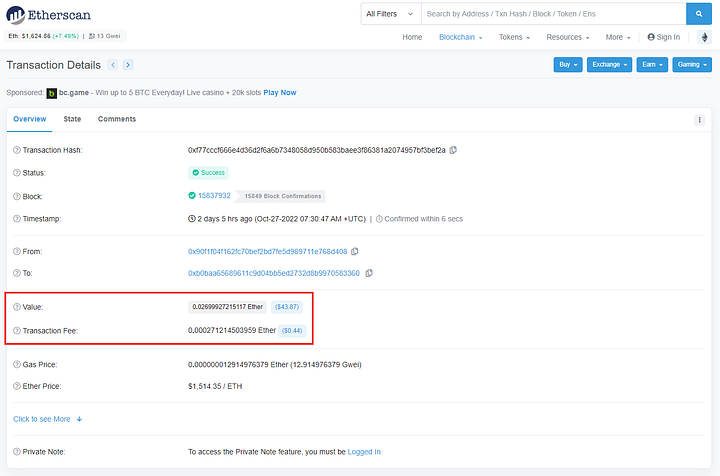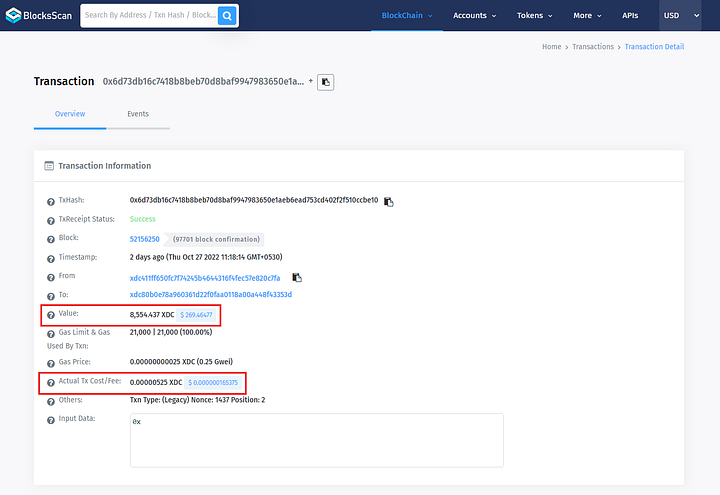XDC Network is more environmentally sustainable in the blockchain, and its transactions are still LESS expensive than ETH 2.0
In this post, we compare Ethereum, the second-largest blockchain network, to XinFin — XDC Network, the Third Generation Blockchain Network.
The Beacon Chain and the original Ethereum Mainnet have merged to form a single proof-of-stake chain known as The Merge. The Merge is the name of the transition from the original proof-of-work system to proof-of-stake. It decreased the energy use of Ethereum by 99.95%, but NOT any less than the XDC Network.
There is just Ethereum now that “Eth1” and “Eth2” have been combined into a single chain, eliminating the need to distinguish between the two Ethereum networks.
The community has changed these terminologies to avoid ambiguity:
The “execution layer,” currently called “Eth1,” is in charge of transactions and execution.
The “consensus layer,” which manages proof-of-stake consensus, is now called “Eth2.”
Let’s check out, Why Proof of Stake is greener than Proof of Work?
Proof-of-work is a reliable method of network security. In the past, the Ethereum blockchain’s transactions were verified by miners using the proof-of-work algorithm. Miners collected transactions and posted them to the Ethereum blockchain as ordered blocks. All other node operators received the new blocks once broadcast and independently performed the transactions to confirm their validity.
Validators are used in Proof-of-Stake instead of miners. As a replacement for Proof-of-work (POW), the initial consensus technique used to verify a blockchain and add new blocks, Proof-of-stake (POS) was developed. Validators perform the same function as miners, except that instead of expending their assets up-front as energy expenditure, they stake Crypto Tokens as collateral against dishonest behavior. These staked Tokens can be destroyed if the validator misbehaves, with more severe penalties for more nefarious actions.
These staked Tokens can be destroyed if the validator misbehaves, with more severe penalties for more nefarious actions.
XinFin XDPoS is an innovative solution to the scalability problem of the Ethereum blockchain and other current blockchain platforms. XinFin XDPoS relies on a system of 108 Masternodes with XDPoS consensus that can support low transaction fees and 2-second transaction confirmation times. Security, stability, and chain finality are guaranteed via novel techniques such as double validation, staking via smart contracts, and true randomization processes.
XinFin XDPoS support all EVM-compatible smart contracts, protocols, and atomic cross-chain token transfers. To continually improve the XinFin XDPoS Masternode architecture, new scaling strategies like sharding, EVM parallelization, private-chain generation, and hardware integration will be actively investigated. It will be the perfect scalable smart-contract public blockchain for decentralized apps, token issuances, and token integrations for small and large organizations.
XDPoS Consensus Solving 4 major problems of Public Blockchain Network
- XDPoS Consensus reduces energy consumption by 1/10 compared to bitcoin or Ethereum-based PoW Mining energy requirements.
- Near to zero transaction (Gas) fees to the customer. creates feasibility to run micro-transactions on blockchain networks.
- Self KYC-based Node solving problem of anonymous network members issue.
- Solving the Scalability Problem of Low numbers of Transactions by Higher Transaction Per Second.
General Comparison
The Ethereum network has a total supply of 122,373,863 ETH with a present market capitalization of $183,337,619,169 while XinFin has 37,705,012,699 XDC total supply and a market value of $384,650,311.
Let’s talk about transaction costs; ETH 2.0 & XDC still has notable differences.
Here, let’s check Fees Comparison.
ETH Transaction: https://etherscan.io/tx/0xf77cccf666e4d36d2f6a6b7348058d950b583baee3f86381a2074957bf3bef2a
XDC Transaction: https://xdc.blocksscan.io/txs/0x6d73db16c7418b8beb70d8baf9947983650e1aeb6ead753cd402f2f510ccbe10
Conclusion
“The merger will result in a 0.2% reduction in global electricity usage.” The energy use of the Ethereum Merge is lowered by 99.95%, but NOT by less than the XDC Network.
Consumption by XDC Network is 0.0000074 TWh or nearly 99.99%. XDC Network is more environmentally sustainable in the blockchain, and its transactions are still LESS expensive than ETH 2.0
Apart from a regular DPoS consensus mechanism, it comes with KYC enforcement on the nodes themselves, This can make it easier for corporate XinFin blockchain members to establish and maintain their own identities while also enabling users to see KYC information.
Staking on the Ethereum Network(ETH 2.0) has been functional for one month, but the XDPoS-based XDC Network has been reliable for four years.










Discussion (0)